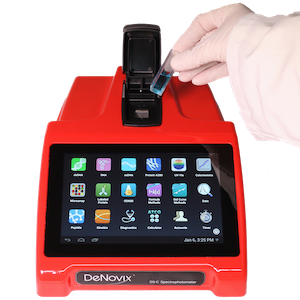Antibody quantification is an important step in reproducible labelling and reliable identification of various monoclonal antibody classes. It provides actionable information into the best dilutions for given applications, how to effectively purify specific antibodies, and which cell lines will yield the most valuable results.
Assessing the total antibody concentration can be challenging as – depending on the techniques used to purify the sample – only a portion of the total count will comprise active antigen-binding antibodies. Additionally, there are various experimental approaches available to molecular scientists carrying out antibody quantification. So which technique is best?
Antibody Endpoint Titration
Titration is used to measure the concentration of unknown solutes. The antibody concentration is indicated by an endpoint, typically a chromatic change in the solution following – or equal to – the equivalence point. Though this technique has its merits, antibody titers can be misleading, particularly for samples containing high concentrations of non-viable or low-avidity antibodies.
Enzyme-linked Immunosorbent Assay (ELISA)
ELISA kits have largely supplanted endpoint titration in wet chemistry labs as they offer greater reproducibility and accurate measurements of total antibody concentrations. They operate on the principle of antibody-antigen binding which allows for accurate quantification of specific analytes using a antibodies conjugated with reporter enzymes, which catalyze when added to a substrate. Again, the reaction is typically indicated by a chromatic change.
The conventional ELISA kit is often upheld as the gold standard for clinical diagnostic applications, but there are many forms of this immunosorbent assay including direct, sandwich, and competition ELISA kits.
However, the precision of results is typically based on single-point interpolation which relies on the sample dilutions optical density falling within a standard curve.
Antibody Quantification Via Spectrophotometry
Spectrophotometry can rapidly and accurately carry out antibody quantification as a function of absorbance at 280 nm. Carrying out antibody quantification via spectrophotometric absorbance at 280 nm is a simple and cost effective method. It offers the opportunity to enter specific extinction coefficients to get accurate measurements without the need for standard curves or assay reagents, and to assess dye incorporation for fluorescently labelled antibodies. Additionally, users can use colorimetric assays like Bradford or Lowry assays for spectrophotometric antibody quantification.
Interested in learning more about antibody quantification? Read our technical note Purity Ratios Explained, or contact a member of the DeNovix team today.



